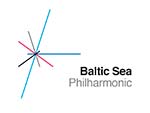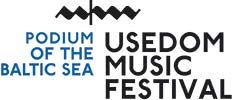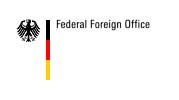Prokofiev’s interest in the orchestral compositions of the Viennese classics – first and foremost Haydn – emerged when he was a student at the St Petersburg Conservatoire in the conducting class of Nikolai Cherepnin. Prokofiev wrote that “It seemed to me that if Haydn had lived to the present day he would have retained his style of composition and accepted some of the new things that are going on. I wanted to compose just such a symphony – a symphony in the classical style.” This idea came to fruition several years later. The orchestral format chosen by Prokofiev for the Classical Symphony matches that of the Viennese classics – a dual formation of winds (without aspectual instruments and trombones), kettle drums and string section. The sequence of the movements, their form and their drama also generally follow the model typical of a classical Viennese symphony. Only the traditional minuet or scherzo (the 3rd movement) is replaced with a gavotte – a genre which later came to be Prokofiev’s “calling card”. The musical language, however, without any doubt whatsoever makes this symphony belong to 20th century music. The unexpected and vivid modulations and shifts into remote tonalities, the use of instruments in extreme virtuoso form and the ironic interpretation of the musical material are all features of Prokofiev’s style which by that time had become fully developed. Prokofiev’s Classical Symphony is not a direct stylisation influenced by Haydn but rather an experience of rethinking, a look back from the 20th century at his legacy. This approach heralded the movement in music that came to be known as neo-classicism.
Vladimir Khavrov
Three years after moving abroad (on a performing tour that lasted no more and no less than fifteen years), the thirty-year-old Sergei Prokofiev brought to life a longstanding vision – to write a “very passage-like” piano concerto, his third work in this genre. Having received a “poisonous” review, as the composer himself said, from the American press, the concerto nevertheless soon became one of Prokofiev the composer’s most famous pieces and the jewel in the crown of Prokofiev the pianist’s numerous concert performances. Possibly the reason behind the immense popularity of the Third Piano Concerto (1917–1921), in particular lies in the fact that the work was composed at the height of his creative career and combined “the still fervent ardour of his youthful temperament … with his emergent maturity and wisdom” (Boris Asafiev). The impetuous flow of contrasting themes that the audience hears – energetic and impassioned, sparkling with energy and mischief, lush and tangibly clear – forms a classically strict and proportionate composition of three sections that are ideally structured in terms of form. A supporter of “the new simplicity” in music, Prokofiev succeeded in expounding all of his musical discoveries with such incredible elegance and laconic brevity: there are no prolixities, general spaces or predictable turns in the concerto, and each musical idea is as if marked by the symbol nota bene and makes us listen to the twists and turns of Prokofiev’s inexhaustible imagination with unfailing interest.
Marina Iovleva
Pärt’s Swansong is an orchestral version of his own choral work Littlemore Tractus. Littlemore Tractus is based on a sermon by the English clergyman John Newman on the Gospel text “I send you forth as sheep in the midst of wolves: be ye therefore wise as serpents, and harmless as doves” (Matthew 10: 16). The sermon was given in the village of Littlemore in 1843, and in 1845 it was there that Newman announced that he was converting to Roman Catholicism, thus starting the “Oxford movement” aimed at reconciling the Anglican and Roman Catholic Churches. The premiere of Swansong took place as part of Mozart Week in Salzburg in 2014 where it was performed by the Wiener Philharmoniker.
Yekaterina Yusupova
Diaghilev’s Ballets russes production of The Firebird on 25 June 1910 at the Opéra de Paris proved a sensational success. Created in close co-operation with the choreographer Michel Fokine and the designer Golovin with outstanding ballet dancers, The Firebird was, in the words of one Parisian critic, “a miracle of the enchanting balance between movements, sounds and forms.” Soon after the premiere, Stravinsky composed the Firebird orchestral suite (1911), not just because of the success of the music but also due to his wish to perfect the music in the concert hall. In 1919 a new suite emerged in which the composer abandoned the grandiose full orchestra used in the score for the ballet. Twenty-five years later, in 1945, Stravinsky once again edited his orchestration of the suite.
Iosif Raiskin






